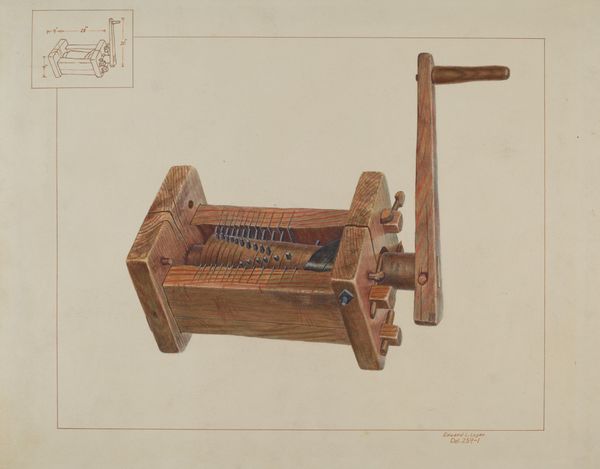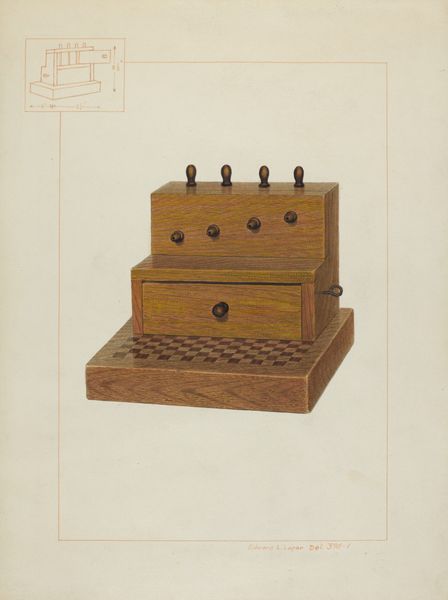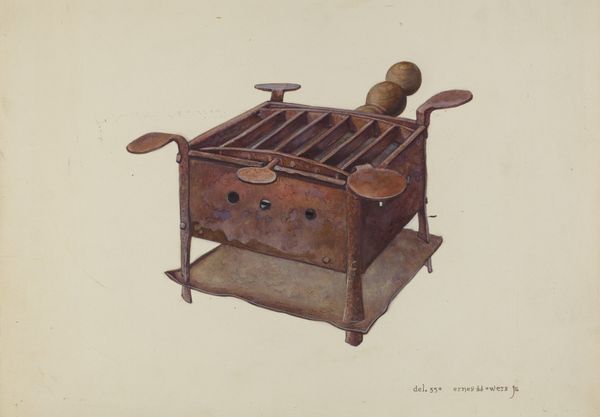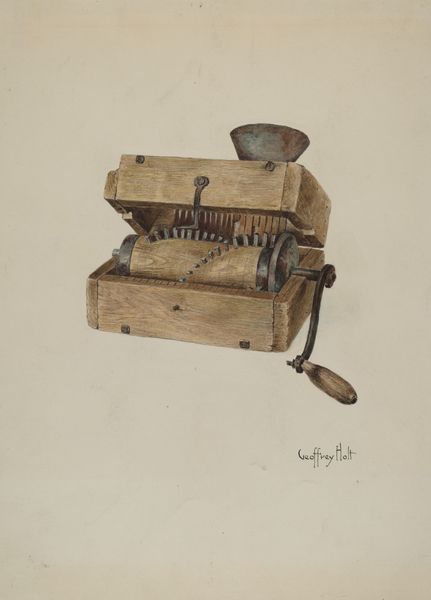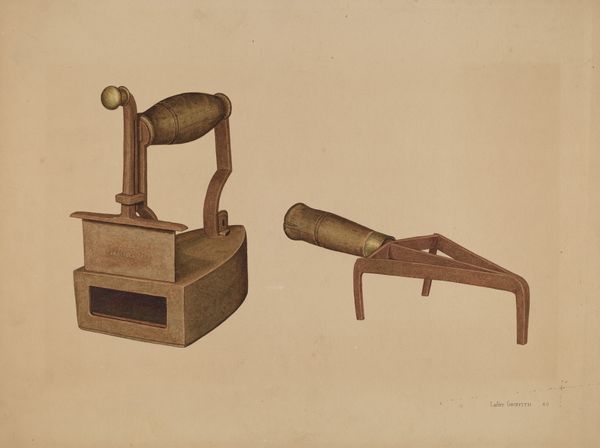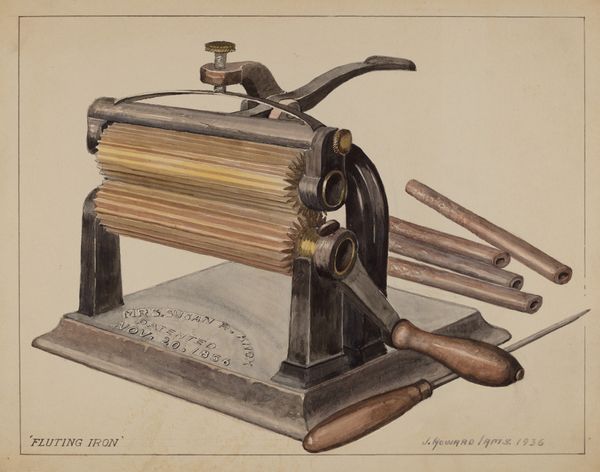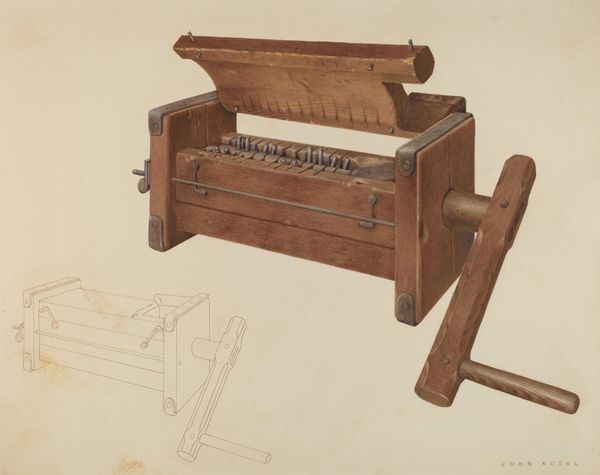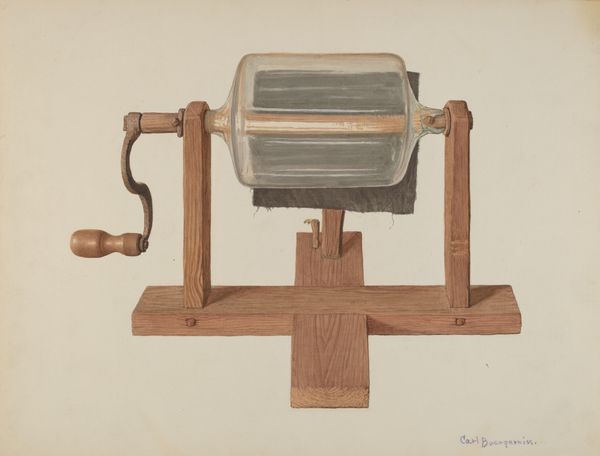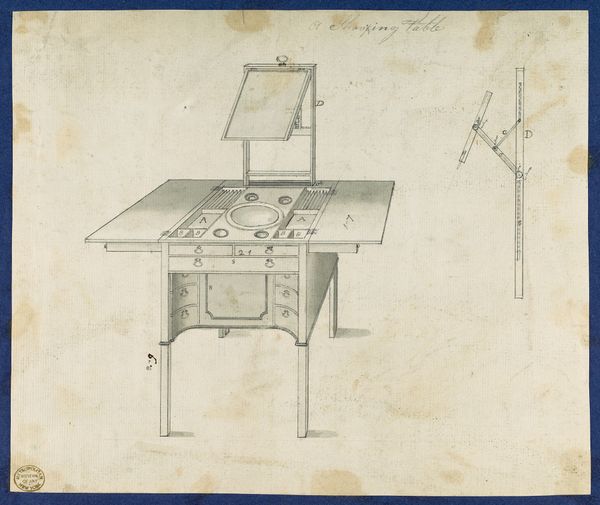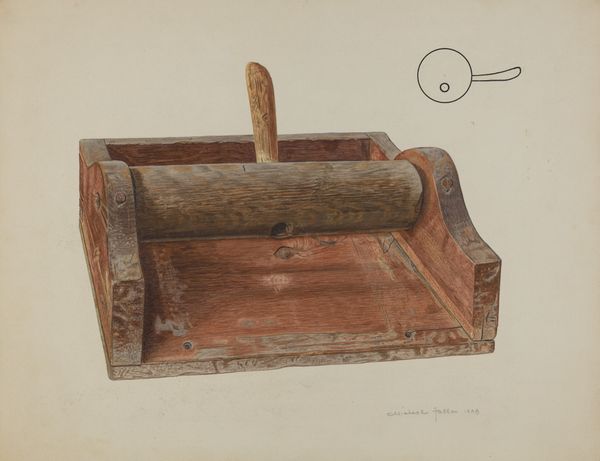
drawing
#
drawing
#
aged paper
#
toned paper
#
charcoal drawing
#
possibly oil pastel
#
personal sketchbook
#
oil painting
#
coloured pencil
#
underpainting
#
watercolour illustration
#
watercolor
Dimensions: overall: 30.3 x 22.4 cm (11 15/16 x 8 13/16 in.)
Copyright: National Gallery of Art: CC0 1.0
Curator: Before us is "Meat Chopper," a work attributed to Thomas Holloway, dating circa 1936. The artwork seems to be composed of watercolor and colored pencil on toned paper. Editor: The tones and shading almost give it an unsettling feel. There's a starkness in the machine's presentation; even in this medium, I feel the implied violence of its use. The hard edges create these interesting triangular shapes within the cylinder of the depicted chopper, and this visual sharpness extends out in the rendering of other shapes within the composition, like the support legs on which the machine rests. Curator: Indeed, if one looks closely at the geometric components, a visual rhythm of repetition and progression is readily apparent. We observe the cylinder of bladed spikes echoing within the shapes and blocks which make up the rectangular support structure. What seems at first glance a mere mechanical object contains this fascinating series of structured, receding forms. Editor: For me, I see an immediate reference to industrialization and labour. This object is a tool, likely employed to reduce the body into processed and easily digestible segments, referencing the mechanization of daily practices. We cannot forget that art and art objects themselves participate in a circuit of labor, production and even commodity. Curator: While I appreciate the connection to the physical, it is interesting to me how this two-dimensional watercolor is more of an abstracted construction. Rather than simply presenting a likeness, this pushes into an evocative form with sharp linearity of contour which emphasizes shape over raw representation. Editor: The materiality is, however, worth pondering – why use watercolor to portray this brutal, metal device? Perhaps this gentler medium emphasizes the violence inherent to the meat industry while softening its literal effects in representation. The effect feels muted yet unsettling at the same time, an artistic tactic underscoring art's complicated negotiation between beautification and critique. Curator: Interesting points all! Focusing purely on the artistic method though—the interplay of line and value suggests careful study and execution; its inherent balance produces more than simply an efficient design object study, don't you agree? Editor: True, but looking at artistic technique as separate from the reality it interprets doesn't do it for me. Appreciating the craft shouldn't require us to strip away the art object's cultural significance. Curator: Perhaps not. Either way, it offers something interesting to think about. Editor: Indeed. Viewing through varying interpretive lenses opens more vistas to observe the nuances within Thomas Holloway's process.
Comments
No comments
Be the first to comment and join the conversation on the ultimate creative platform.
